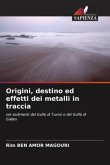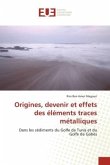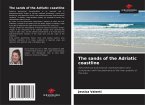Tunisia has a maritime facade of 1300 km on the Mediterranean Sea. The coastal area which is strategic for socio-economic development, is experiencing an ever-increasing degradation of its environmental conditions which has led to the regression, in some coastal areas, of biological diversity. Indeed, these areas are contaminated by many pollutants, especially metal elements on which is focused the interest of this work. Estuarine and coastal areas, under strong continental influence, are the most affected by this contamination. Contamination by these elements is a major concern because of their toxicity, their mobilization and their bioaccumulation. Marine sediments are often used as environmental indicators of quality and potential risk on the biotope. It is within this framework that the present work is integrated, which focuses on the Gulf of Gabes and the Gulf of Tunis, which are strategic areas for the socio-economic development of Tunisia, and which are now experiencing serious signs of degradation.








